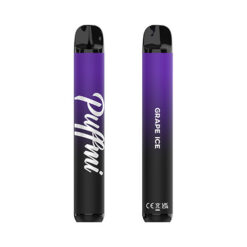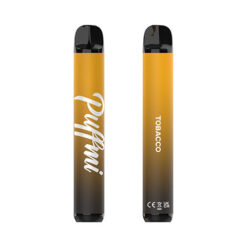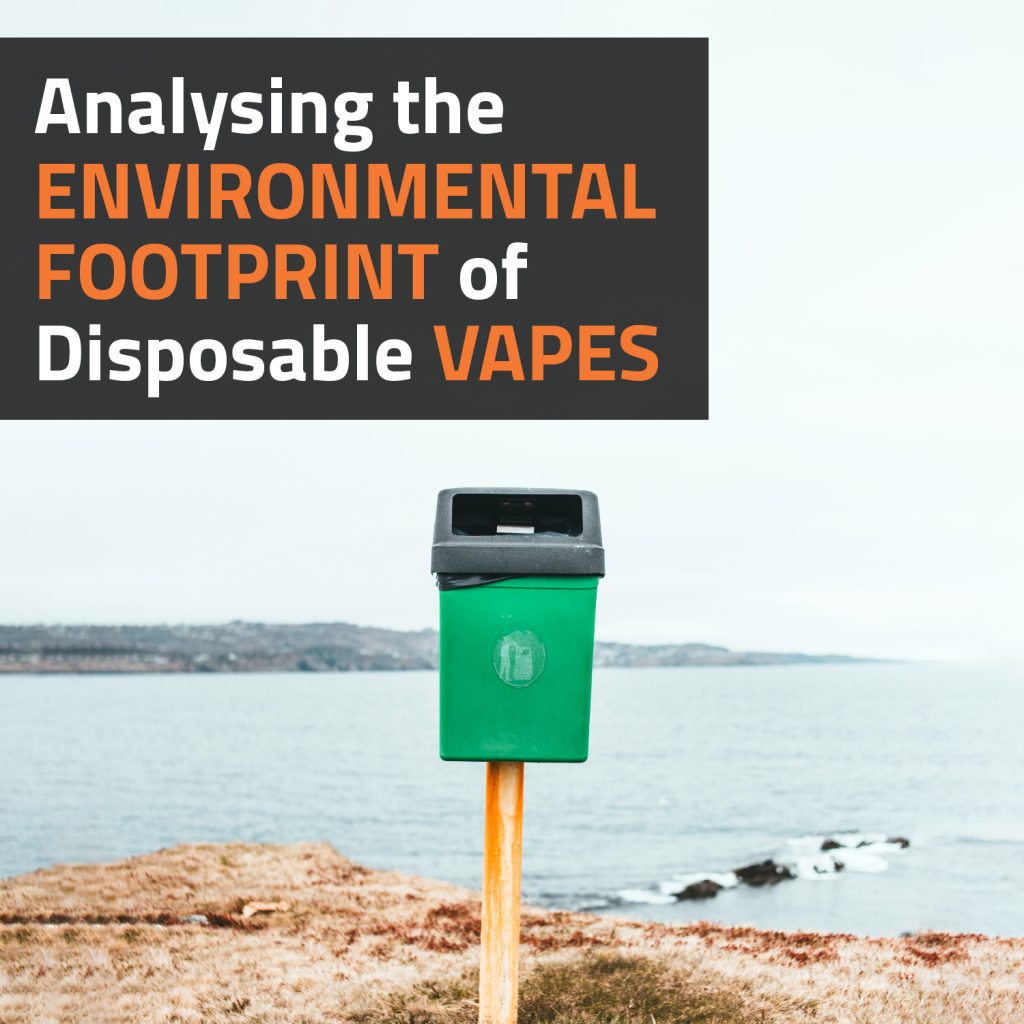As vaping continues to gain popularity, so does the concern about its impact on the environment. Among the various vaping devices available, disposable vapes have emerged as a convenient and user-friendly option. However, their widespread usage raises questions about their environmental consequences. This article delves into the environmental footprint of disposable vapes, examining the life cycle of these devices, their components, and the challenges surrounding their disposal. By analysing their carbon footprint and exploring potential sustainable alternatives, we aim to shed light on the environmental implications of disposable vapes and the importance of responsible vaping practices.
-
Puffmi TX2000 Mint Ice
R150.00 -
Puffmi TX2000 Grape Ice
R150.00 -
Puffmi TX2000 Tobacco
R150.00 -
Puffmi TX2000 Lush Ice
R150.00
The Rise Of Disposable Vapes: A Growing Environmental Concern
Disposable vapes have seen a significant surge in popularity in recent years, driven by their convenience and ease of use. These single-use devices require no maintenance or refilling, making them an attractive option for vapers seeking a hassle-free experience. However, with their widespread adoption, a growing environmental concern has emerged.
The convenience of disposable vapes comes at a cost to the environment. These devices are designed to be used and then discarded, contributing to the mounting electronic waste (e-waste) problem. Unlike rechargeable and refillable vaping devices, disposable vapes are not intended for long use, leading to a rapid accumulation of discarded units.
The primary environmental concern lies in the materials used in disposable vapes. They typically contain a battery, plastic casing, and various electronic components, all of which can be challenging to recycle. Improper disposal of disposable vapes can lead to environmental pollution, as hazardous chemicals and heavy metals may leach into the soil and waterways.
As the use of disposable vapes continues to rise, it becomes essential to address their environmental impact. Manufacturers, consumers, and regulators must collaborate to find sustainable solutions. Encouraging responsible disposal practices and developing recycling programs for electronic waste can help mitigate the environmental harm caused by disposable vapes.
Environmental Regulations And Disposable Vapes: Current Measures And Future Prospects
Currently, the regulations surrounding disposable vapes vary from one region to another. Some countries have implemented e-waste disposal guidelines that cover electronic vaping devices, including disposables. These regulations may require manufacturers to meet certain recycling standards or provide information on proper disposal methods to consumers.
Some regions have also imposed restrictions on the materials used in disposable vapes, aiming to reduce the environmental footprint. These restrictions may target specific hazardous substances, encouraging manufacturers to opt for more eco-friendly alternatives in their device construction.
In addition to national or regional regulations, environmental organisations and advocacy groups are actively pushing for more stringent measures. They are calling for extended producer responsibility (EPR) programs, where manufacturers are held accountable for the end-of-life management of their products. EPR initiatives would incentivize manufacturers to design devices with sustainability in mind and encourage proper disposal or recycling practices.
While current measures show progress in addressing the environmental concerns related to disposable vapes, there is still room for improvement. The future prospects for environmental regulations in this area are promising, with potential developments including:
- International standards: The issue of disposable vape waste is a global concern, and as awareness grows, there may be an effort to develop international standards for their production, use, and disposal. Collaboration among nations could lead to more unified and effective regulations.
- Product labelling: Clear and standardised product labelling could help consumers make informed choices about the environmental impact of disposable vapes. Labels may indicate whether a device contains hazardous materials, how to properly dispose of it, or its recyclability.
- Circular economy initiatives: Emphasising a circular economy approach could encourage the design of disposable vapes with recyclability and reusability in mind. Manufacturers may be incentivised to create devices that can be easily disassembled and recycled, reducing overall e-waste.
- Extended recycling programs: Expanding recycling infrastructure and establishing accessible collection points for electronic waste, including disposable vapes, could facilitate responsible disposal and recycling
- Innovation in materials: Research and development into sustainable materials for disposable vapes may lead to new, eco-friendly alternatives, reducing their environmental impact.
Sustainable Alternatives: Exploring Eco-Friendly Disposable Vape Options
As concerns over the environmental impact of traditional disposable vapes grow, the vaping industry is witnessing a push towards more sustainable and eco-friendly alternatives. Manufacturers, vapers, and environmental advocates are actively seeking ways to reduce the carbon footprint and e-waste generated by these single-use devices. Here are some eco-friendly disposable vape options that have emerged as sustainable alternatives:
- Biodegradable materials: One promising avenue is the use of biodegradable materials in the construction of disposable vapes. Manufacturers are exploring plant-based plastics and other biodegradable components that break down naturally over time, reducing the environmental burden. Biodegradable disposable vapes help minimise long-term environmental impact and contribute to a more circular economy.
- Compostable pods: Some eco-conscious companies are developing compostable pods for disposable vapes. These pods are made from materials that can be safely composted, providing a more sustainable end-of-life option. Compostable pods break down into organic matter, reducing waste and contributing to soil health when properly composted.
- Refillable disposable vapes: Refillable disposable vapes offer a hybrid solution, combining the convenience of disposable devices with the reusability of refillable systems. These vapes come with refillable cartridges or tanks that users can replenish with e-liquid, reducing the need for constant disposal and repurchase. Refillable disposable vapes promote a more eco-friendly vaping experience.
- Recyclable components: Manufacturers are exploring ways to design disposable vapes with recyclable components. Implementing easily recyclable materials and ensuring clear disassembly instructions encourage responsible recycling practices among consumers. By reducing the complexity of recycling disposable vapes, manufacturers can contribute to more effective recycling efforts.
- Extended product lifespan: Some eco-friendly disposable vapes are engineered for extended use, offering a longer product lifespan. These devices may have larger battery capacities or replaceable components, ensuring users get more value from each device and reducing the overall waste generated.
- Environmental certifications: Manufacturers committed to sustainability may seek environmental certifications for their disposable vape products. Certifications, such as the Green Seal or EcoLogo, verify that the product meets specific environmental standards and is produced with minimal ecological impact.
- Consumer education: Educating consumers about the environmental impact of disposable vapes and promoting sustainable alternatives play a crucial role in driving change. By raising awareness, consumers can make more conscious choices, opt for eco-friendly options, and adopt responsible disposal practices.
As the popularity of vaping continues to grow, it is essential to address the environmental impact of disposable vapes, which have emerged as a convenient and user-friendly option for many vapers. Throughout this examination of their environmental footprint, several key concerns have come to light.
Disposable vapes contribute significantly to electronic waste, and their materials can be challenging to recycle, posing a risk of environmental pollution. The energy-intensive production process and the rapid accumulation of discarded devices further amplify their carbon footprint, contributing to climate change.
However, this analysis also sheds light on promising solutions and initiatives aimed at mitigating the environmental impact of disposable vapes. Sustainable alternatives, such as biodegradable materials, compostable pods, and refillable options, offer eco-friendly choices for conscious consumers. Increased consumer awareness and responsibility play a crucial role in driving change, as informed choices and responsible disposal practices become essential pillars of a greener vaping industry.
Looking ahead, environmental regulations are expected to evolve, creating a more sustainable framework for the vaping industry. With extended producer responsibility programs, recycling initiatives, and international standards, manufacturers can be incentivized to prioritise eco-friendly practices in their designs and production processes.
Ultimately, it is a collective effort – by manufacturers, consumers, and regulators – that will shape the future of disposable vapes and the overall environmental impact of the vaping industry. By fostering a culture of sustainability and responsible vaping practices, we can work towards a greener and more environmentally conscious vaping landscape.










